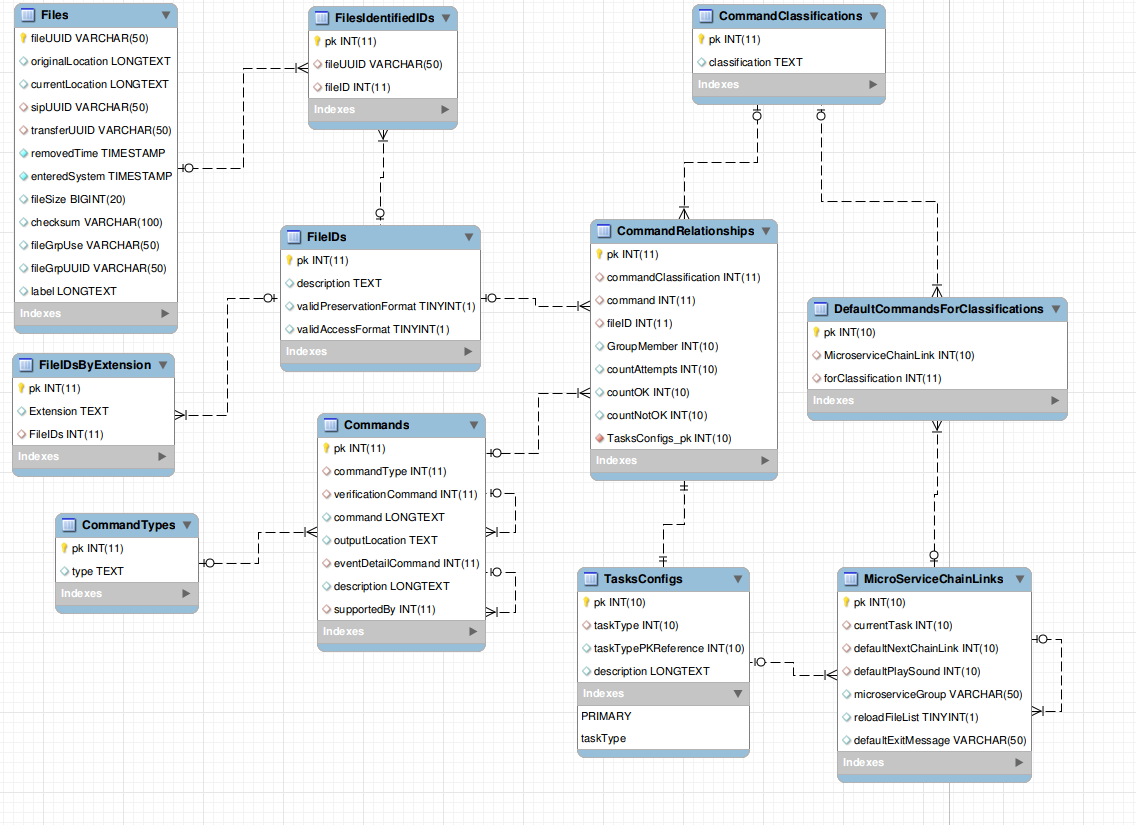Transcoder
Transcode: convert (language or information) from one form of coded representation to another.[ source: Oxford English Dictionary ]
Overview
The transcoder is developed by artefactual, for the purpose of normalization and generating access copies in the archivematica system. In earlier versions it was called normalizer. It will try to identify the file type by the file extension, or other metadata, and look for matching configured actions for those identified. It will then perform those actions, and exit with a zero status if it believes those actions have been completed successfully.
Transcoder Database
In Archivematica release 0.7.1 alpha, the normalalization rules have been moved to a database, and can be seen under the preservation planning tab on the dashboard. In future releases, we plan to support modification of these rules through the dashboard interface.
Database Schema
Configuration
Configuration files are located in the /etc/transcoder/ directory.
The transcoder database credentials and server can be set in the dbsettings.conf file.
Development
In the 0.9 release the transcoder was integrated with the MCP.
During transfer processing, the fileIDs are identified by microservices. They are stored against the file in the FilesIDentifiedIDs table.
For normalization processing, the MCP will process down a chain for each file. The job for normalization of a file will check for command relationships with the identified file id's and the proper command classification (normalize preservation, normalize access). For every unique command found in that relaitonship, the MCP will create a task to be executed by the client. If no commands are identified the MCP will create a task with the default command, from the DefaultCommandsForClassifcations table, if one is defined.
Future Development
We are considering building a Format_policy_registry.
